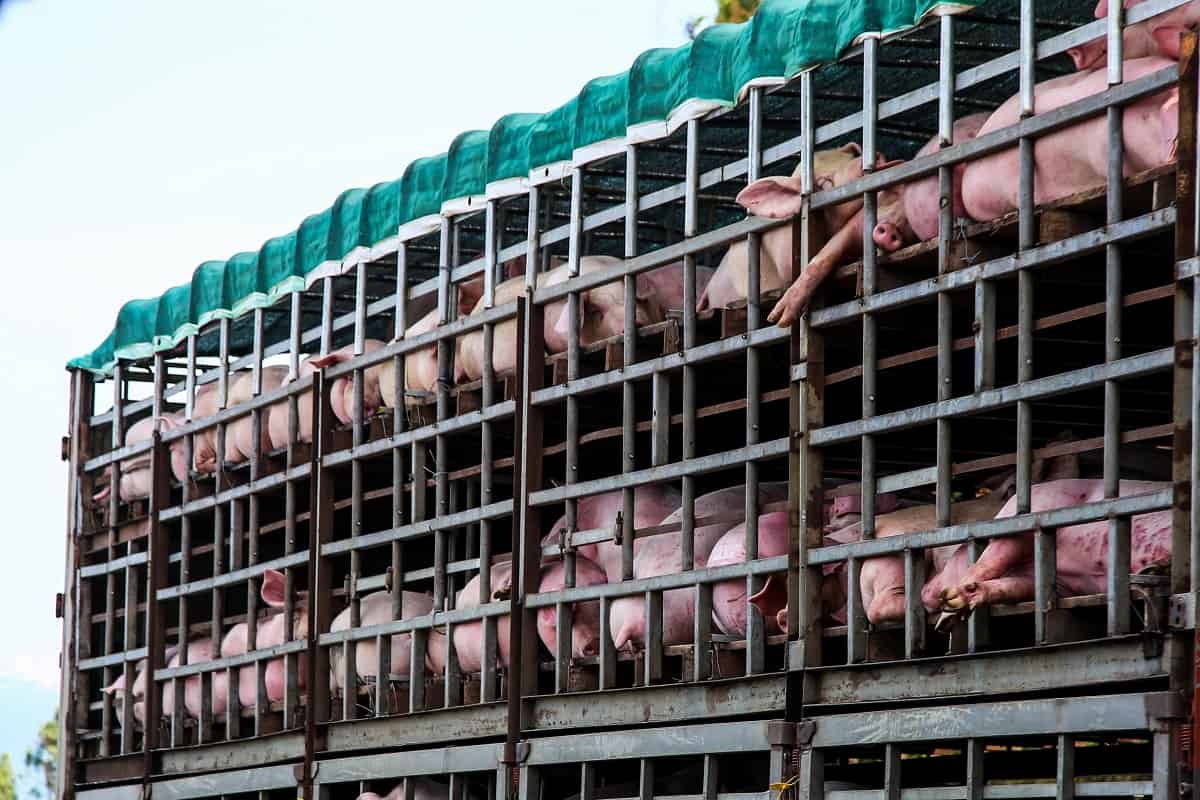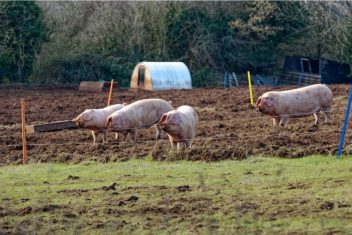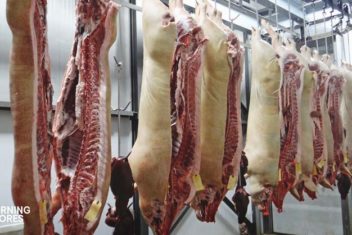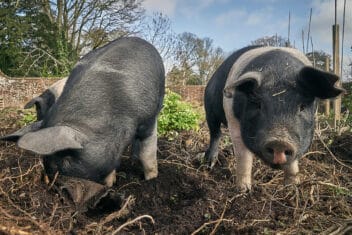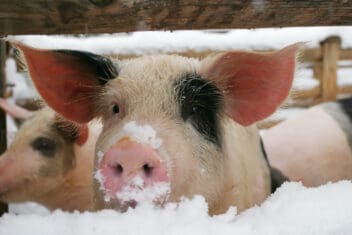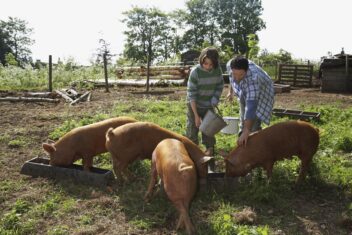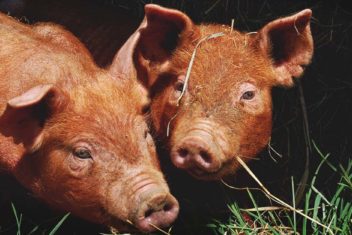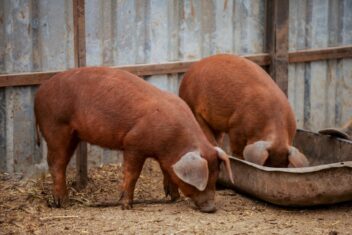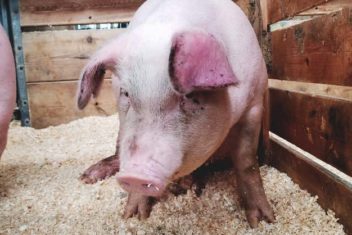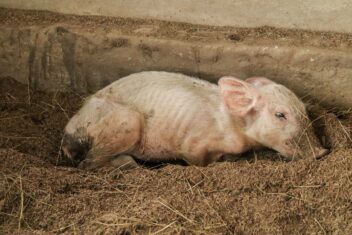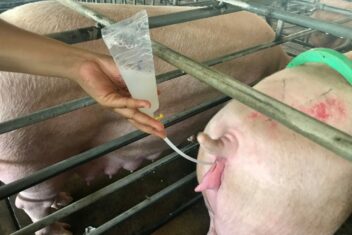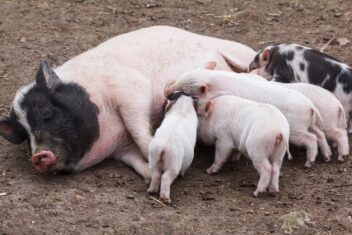Are you moving pigs, whether to get them to slaughter or to the 4H show? If so, you’ll need to be smart about how you do it.
One of the hardest things about owning a hog is figuring out how to transport it. Hogs are very large but can be transported in an enclosed trailer or stock trailer with some effort.
The safest way to transport pigs is in an enclosed trailer, which protects them from weather and collisions.
There are certainly other ways to move pigs, but having an enclosed trailer to move your hogs is the most reliable way to do so.
Aside from the “what” you will use to move your pigs, you also need to tackle the “how.” Pigs are notoriously stubborn animals, and getting them from Point A to Point B isn’t always easy.
Here are some tips to help you transport pigs – maybe not necessarily in style, but safely!
When is Transporting Pigs Necessary?
There are a few situations when you might discover that moving pigs is necessary. Here are some of the most common.
1. Purchasing or Selling
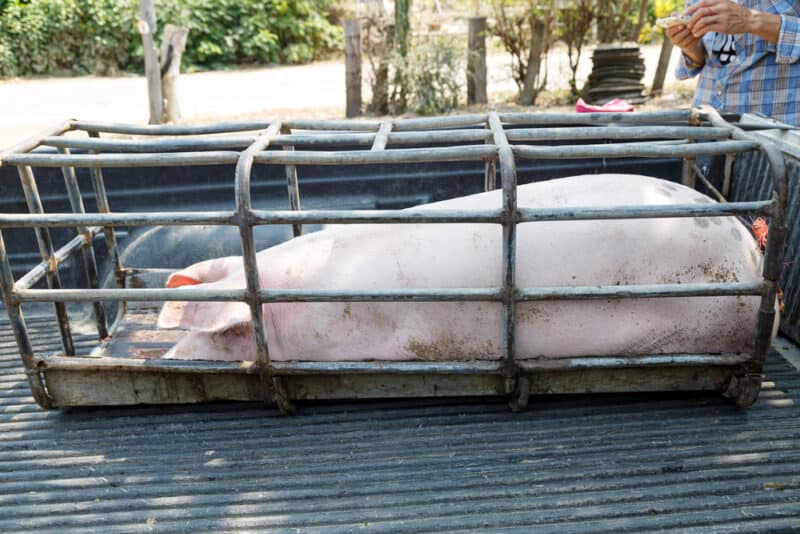
This is one of the most common reasons why people move their pigs and, unfortunately, it is also unavoidable. If pigs are moving from farm A to farm B, then unless those two farms are neighboring, they need to get in a trailer to get to their new home.
The good news is that this is something that’s often done with young grower pigs, who bounce back from the stress of the move a bit easier than older sows. However, you will still need to take the appropriate steps to ensure that your pigs don’t become distressed by the move.
2. Moving to Slaughter
Another often unavoidable situation is when you need to take your pigs to the slaughterhouse.
Many farmers don’t pay this much thought, assuming that stress levels don’t matter because the pig isn’t going to be alive for that much longer.
However, multiple studies have shown that stress before slaughtering can dramatically reduce meat quality (due to cortisol production). Pigs also lose a shocking percentage of their body weight when they are stressed, even for brief periods.
It can even lead to conditions like the expression of porcine stress syndrome.
Therefore, you must exercise caution when moving pigs, even in the moments leading up to slaughter.
3. Show or Breeding

If you have pigs that you use for exhibition or breeding, you may find that moving them in a trailer or by other means is necessary, too.
If you have pigs that are more likely to be stressed than others, you may have to re-evaluate whether using them for show or breeding is a good idea. Are there other animals you can use instead?
4. Is It Really Necessary?
While you probably aren’t inclined to load your pigs up into the trailer just to take a joy ride, the reality is that there are some situations in which moving them may not be really necessary.
For example, instead of trailering pigs to the slaughterhouse, would it be possible for you to engage in on-farm slaughter? Rather than moving your pigs to another farm to be bred, could you consider AI breeding?
Explore all options to limit their stress (and yours) by transporting them.
10 Tips for Transporting Pigs
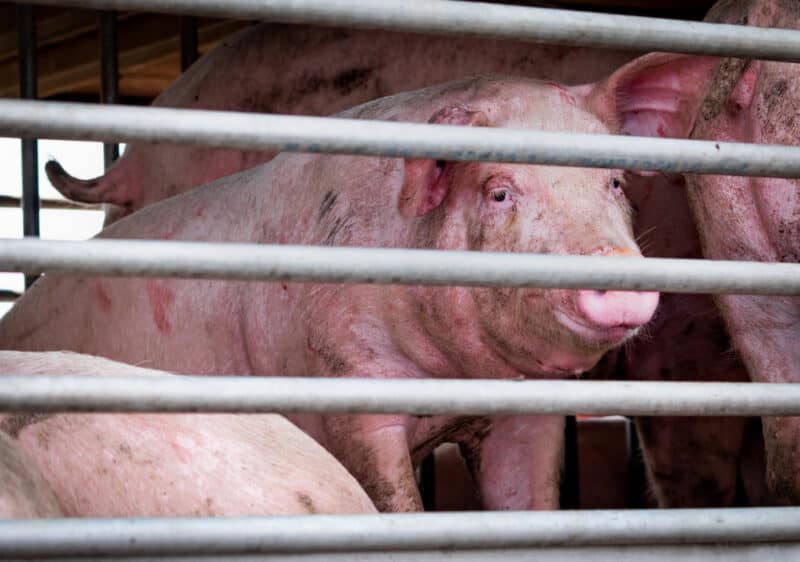
Here are some general tips for moving pigs so that you (and most importantly, they!) can have a stress-free experience.
1. Familiarize Yourself With Signs of Stress
This is a good tip for pig keeping in general, but especially if you ever plan on moving your pigs.
Keep an eye out for the following symptoms, listed from the mildest to most severe:
- Rapid breathing
- Increased heart rate
- Elevated body temperature
- Open-mouth breathing
- Red or discolored skin
- Inability to move
- Squawking or gasping sounds
- Collapse
Ultimately, ignoring the signs of stress can cause death, so you must take it slow and allow your pigs to rest if they exhibit any signs of stress.
2. Get Pigs Used to Being Handled
This can be a tough one, but if possible, try to get your pigs acclimated to being handled. Interact with the pigs when you feed them. If they let you, pet them.
Of course, always be careful when handling your pigs, but know that a pig who is used to human interaction will be far easier to load and transport than the mostly feral one.
3. Stay Calm and Don’t Rush the Pigs
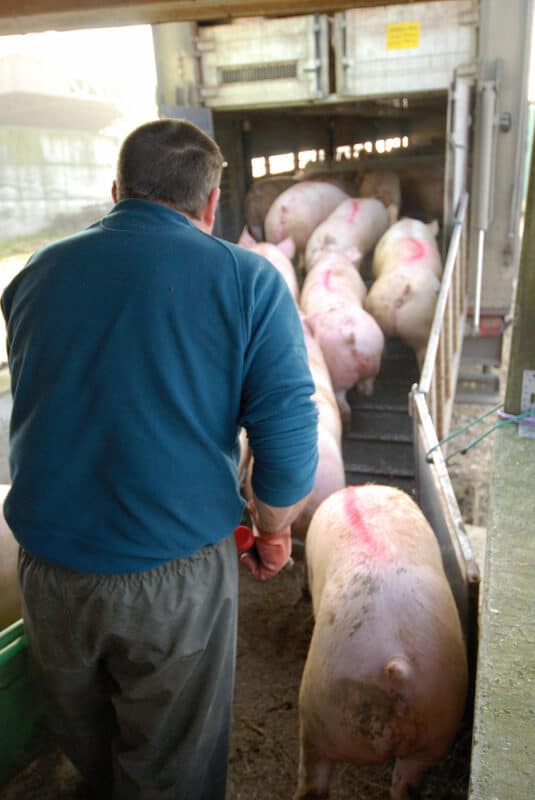
A mistake I almost always make when moving pigs is thinking that they will operate on my timeline. Ha! Think again.
A pig has a mind of its own, and inevitably, the more you try to rush a pig, the slower he is going to move.
You need to make sure you stay calm and, most importantly, give yourself plenty of time to load the pigs. Don’t put yourself into a time crunch that will stress both you and the pigs.
4. Use Sorting Panels
Sorting panels can be your best friend when moving any type of animal, but especially when moving pigs. Invest in a few (or build some) to make your life easier.
5. Avoid Electric Prods
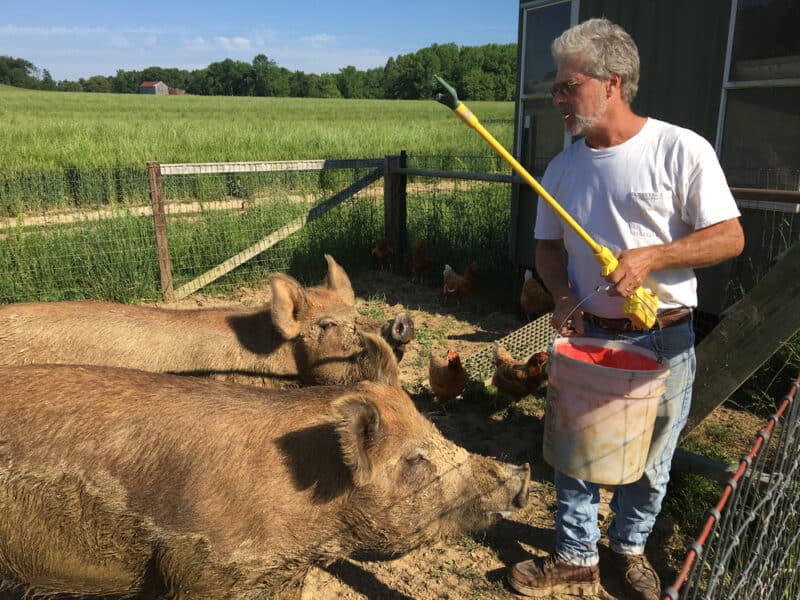
This should more or less go without saying, but try to avoid being rough. I don’t like using paddles or electric prods. Some pig keepers swear by them, saying that they are necessary.
The problem with things like prods, especially when used on a pig several times in a row, is that they can cause panic. Being rough or aggressive with the pigs in any way can make them more aggressive and lead to a dangerous situation.
6. Take Advantage of the Natural Leader
Did you know that pigs, just like most groups of social animals, have a natural leader? If you can figure out who this is (often, it’s the largest pig, though not always), you can take advantage of the social structure to move your pigs.
Rather than leading or forcing all of your pigs, one by one, into the trailer, you can let the leading pig guide the rest. Entice that leading pig and you’ll have a much easier time moving the others.
7. Use Alleys and Corners
Both tight corners and alleys can be helpful when moving pigs – but they can also be your downfall.
Try to avoid sharp turns in alleys and make sure the lighting is bright. Pigs don’t want to move ahead if they can’t see what’s next, but they also aren’t great at backing up. This can lead to a bottleneck.
Instead, just move a few pigs at a time – no more than 6 at once if the alley is 3-feet wide.
8. Make Sure You Have the Right Trailer
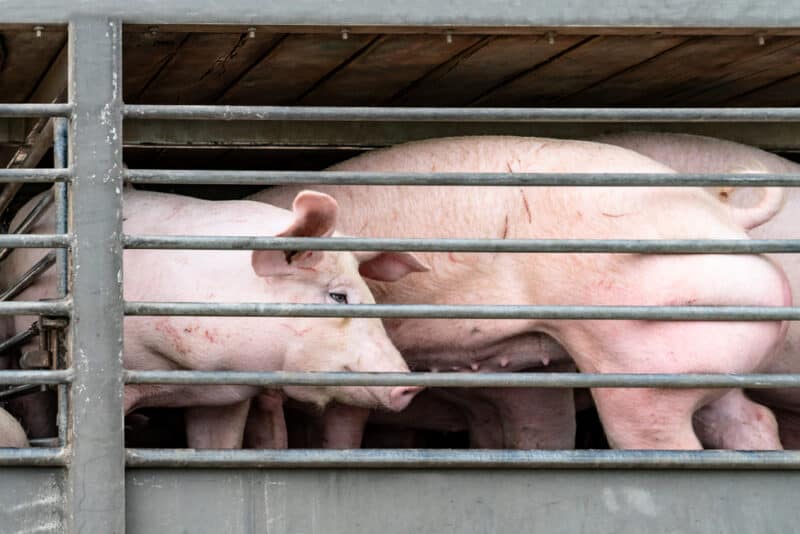
When you’re hauling small, young pigs, you don’t need a lot of space. Many people haul them in the back of a truck or a crate, making a trailer obsolete.
However, adult pigs and market pigs need much more space. Open trailer sides or those with vents are ideal to increase airflow.
9. Keep Spacing in Mind
Pay attention to how much room you have in your trailer. There needs to be adequate ventilation, and the space needs to be covered to prevent sunburn.
Leave enough space so that every single animal can lie down at the same time. You may need to invest in partitions to separate the load or minimize fighting.
10. Don’t Let Them Stand – Start Moving ASAP
Once your pigs have been loaded into the trailer, try to get going ASAP. Now is not the time to pop back into the house to enjoy that second cup of coffee. You need to hit the road.
The longer you have pigs in the trailer, the more likely they are to stand up and move around. If you start moving after that, they could fall and injure themselves.
Finally, try to transport pigs during the early morning or later evening hours, when the temperatures are cooler. This, too, can minimize stress.
Drive Carefully!
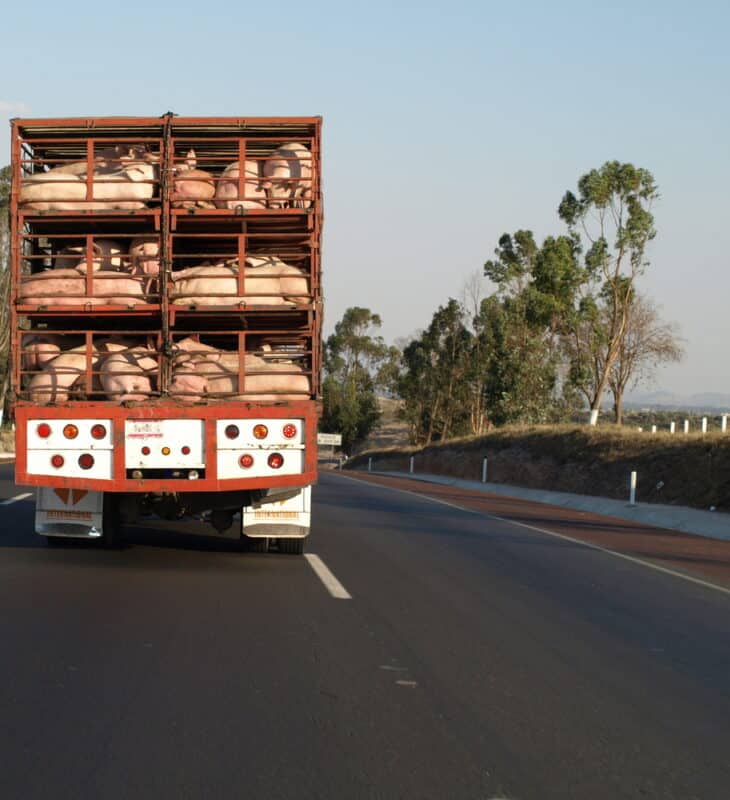
It is important to be mindful of the transportation process and how it will affect your hogs. Be sure that you have a sturdy trailer for transporting them, and do not overstuff or overcrowd the vehicle with animals.
You also have to make sure they are comfortable in their temporary digs, so provide bedding materials, like straw, if needed.
The most important tip? Pay attention! Although you should always do your best to limit distracted driving and stay attentive while on the road – now is not the time to check your Instagram! – it’s even more important when you’re hauling livestock.
Avoid sharp movements, like making jerky turns or slamming on the brakes, as this can further stress your pigs.
Transporting pigs can be a tricky business, but with the right tips and attention to detail, you should have no problem getting your animals from point A to point B.
